Storing for the season | Water quality field instruments
Sensor storage solutions
To get the most reliable data and a long life out of your field water quality instruments and sensors, it’s important to learn how to store them properly between uses. Keep in mind that there are specific instructions depending on how long you will be storing your equipment: short-term or long-term.
We define short-term storage as less than 4 weeks of inactivity. This means you would follow short-term storage techniques for instances that are just a few minutes, overnight, or up to a few weeks at a time. You might need to store your sensor for the short term when traveling to or from the field, moving between sampling sites, or returning equipment to the office for calibration, repair, or swapping sensors.
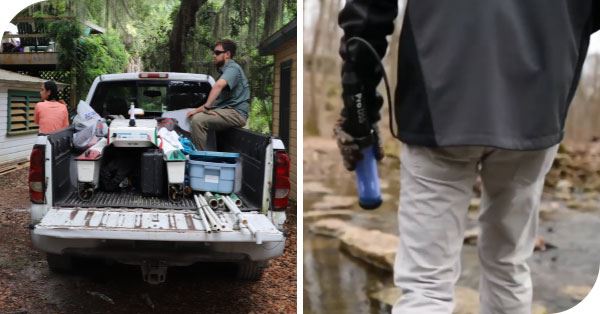
Long-term storage refers to any amount of time greater than 4 weeks between uses. For example, you may use long-term storage techniques between projects or during a sampling off-season, typical during winter freezes, extreme weather, or non-target conditions.
This blog will outline the best practices for water quality instrument and sensor storage, but always consult the user manual to determine the most appropriate storage technique recommended by the manufacturer.
Short-term storage
All YSI environmental sensors can be stored using the following short-term storage methods, but generally, these apply to other brands as well.
To store short-term:
- Leave the sensors installed
- Put a small amount of tap water (about 50 mL or ½ inch) into the calibration or storage cup, or use a clean, water-saturated sponge
- Seal the sensors in the cup by tightening the lid to create a moist air environment and prevent the sensors from drying out
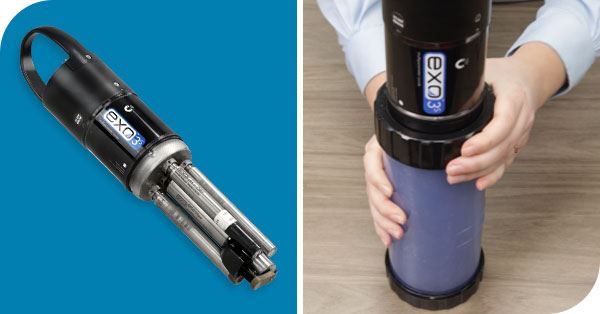
Leave sensors installed. Install the calibration/storage cup with a small amount of water or saturated sponge.
The storage water can be tap water, bottled water, or even site water in a pinch. If you do use site water, change it out for tap water, when possible, to prevent algal growth on the sensors.
It is not ideal to use deionized (DI) water to store sensors, and it can be especially damaging for pH, ORP, and ion-selective electrodes (ISEs). Even though, if kept upright, the sensors will not be in contact with the water, if the instrument falls on its side or is transported in a case, DI water can contact the sensor tips and cause the reference solution to leach from pH/ORP bulbs and ISEs. Similarly, it is not ideal to submerge the sensors in water—even if it is tap water—because this can also deplete the reference solution over time, causing drift and potentially limiting their usable life span.
Make sure the calibration cup or storage bottle is on completely to fully seal the sensors and prevent the sensor tips—especially dissolved oxygen, pH, and ISEs— from drying out.
Then you can store your instrument in a case for transport or in a cabinet to protect it. Dry the outside of your instrument, accessories, and cables before you put them in a case or in a cabinet to prevent mold growth. If it is not fully dry, you can leave the case open to expose the equipment to air.
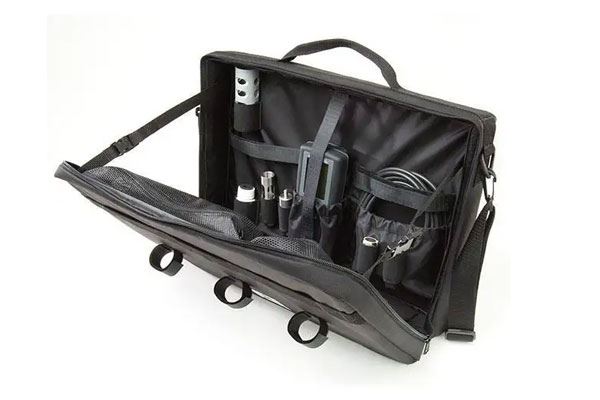
Store your instrument and sensors in a case to protect them. Leave it open if the equipment is not fully dry.
If you are storing your sensors for closer to 4 weeks, you should check on them a couple of times to make sure they stay hydrated in the event the calibration or storage cup is not fully sealed.
In the event a DO sensor dries out, soak it in tap water overnight to rehydrate the membrane or optical DO cap. This will usually work, but if not, you may need to replace it.
If a pH or ORP sensor dries out during short-term storage, you can rehydrate it in pH 4 buffer. You can rehydrate ISEs in their standard solutions. Again, you may need to replace the sensor or sensor tip if the sensor has trouble calibrating or if the data indicators (mV slope, etc) are not within optimal ranges.
Note that you can also store your multiprobe (EXO, ProDSS, etc.) in pH 4 buffer, with all the sensors submerged. This will not damage the sensors, including the DO sensor, but it may cause discoloration on the DO membrane cap because of the dye in the buffer.
If you have an instrument like the ProSwap or Pro30 that only measures conductivity, temperature, or an optical parameter like turbidity, rhodamine, chlorophyll, Dissolved Organic Matter, or UV Nitrate, it can be stored dry. You may choose to cover the sensor tip to protect the sensing window.
Key points for short-term storage:
- “Short-term” refers to less than 4 weeks
- Keep sensors installed
- Use a small amount of tap water
- Seal the storage cup to prevent sensors drying out
- pH/ORP, ISEs, and DO need to be kept wet!
- You can store C/T and optical sensors dry (NOT Optical DO)
- Dry the outside of your equipment before storing
If you need more information regarding the best practices for instrument and sensor storage, please check out our on-demand webinar, Storing for the Season!
Long-term storage
In general, always remove internal batteries from your instrument before long-term storage, since your equipment may be sitting for a few months. Alkaline batteries can leak over time and corrode the internals. If your instrument uses lithium-ion batteries, they can be left installed.
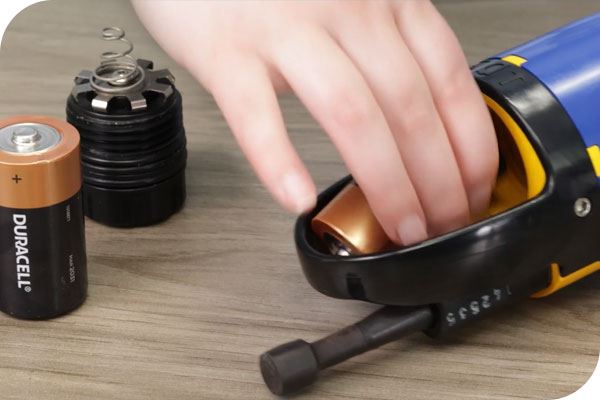
Remove alkaline batteries before long-term storage.
Upon removing the batteries, clean the battery compartment with a jet of DI water to rinse, and dry with a lint-free cloth. Make sure it dries completely. If there’s corrosion on the metal terminals, clean and polish them. Baking soda can neutralize and remove battery acid.
Consider sending your instruments in for factory maintenance during long periods of inactivity. This will help maintain them over time and is recommended at least every few years to ensure your field instruments continue to collect high quality data.
After thoroughly cleaning, inspecting, and maintaining your equipment, it can be stored long-term. All instruments and sensors should be stored indoors in a climate-controlled area. If sensors are removed from the bulkhead, plug the bulkhead port with a port plug. Note the following sensor-specific long-term storage instructions.
pH/ORP
- Immerse in 1M potassium chloride (KCl) or pH 4 buffer
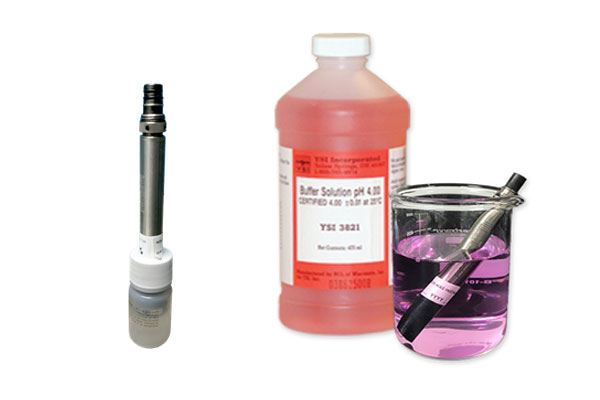
Ammonium, Chloride, and Nitrate ISEs
- Leave the sensor dry, and seal the sensor tip in a shipping bottle to prevent reference solution depletion
- Rehydrate in standard solution overnight before use
- Alternatively, seal in the shipping bottle with a small amount of standard solution to create a moist air environment and keep upright to prevent contact with the solution
Use the standard closest to your measurement range for storage; that way, if the sensor tip does contact the solution, it will not be damaged.
Since the ISE usable life is generally about 3-6 months, you will likely need to replace the sensor or sensor tip before you use it again.
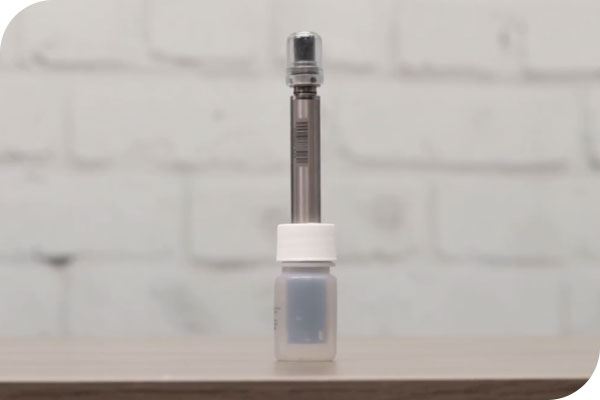
Either store ISEs dry in a shipping bottle or add a small amount of standard and keep upright.
Polarographic and Galvanic DO
You will likely need to install a new membrane cap when you use the sensor again.
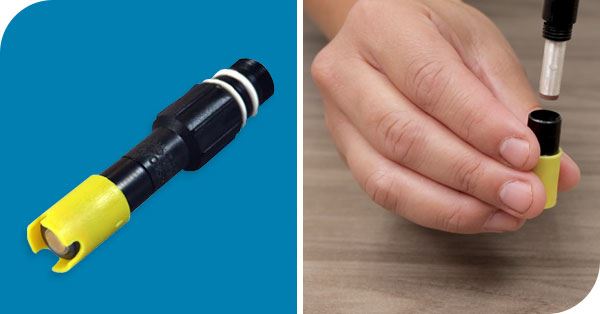
Optical DO
- Store in a moist air environment; use the shipping cap with a wet sponge or a container with a small amount of water. Seal the container to prevent moisture loss
- Alternatively, store it submerged in tap water
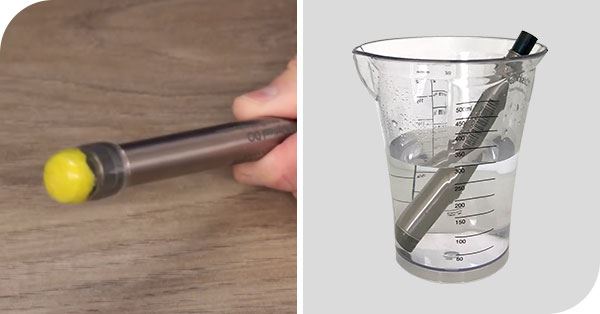
Store ODO in a shipping cap with a moist sponge or submerged in water.
Conductivity/Temperature
- Store dry
- Can be stored wet without issues
Optical Sensors (Turbidity; Total Algae (Chlorophyll and Phycocyanin/Phycoerythrin); fDOM; NitraLED (UV Nitrate); Rhodamine)
- Store dry
- Can be stored wet without issues
- Protect the sensor window from scratches by covering with a shipping cap
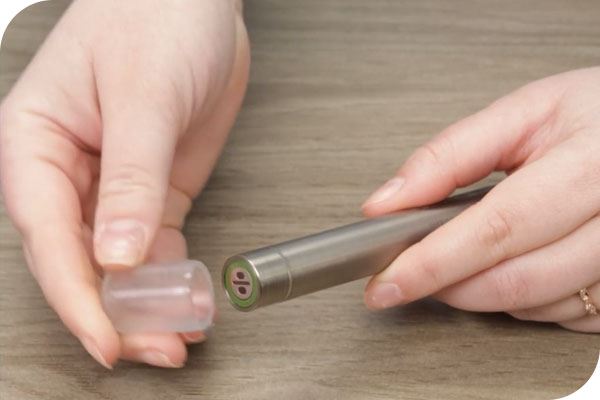
Place a shipping cap on the sensor tip to protect the sensing window during storage.
Depth
- Store dry to prevent mildew growth in the transducer port
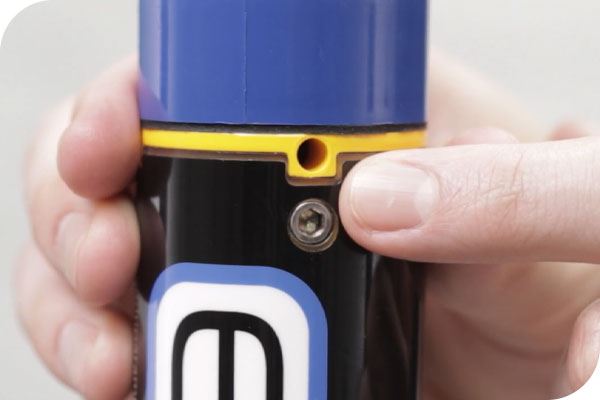
Depth port on EXO1. Store dry to prevent growth in the port.
Key points for long-term storage:
- “Long-term” refers to more than 4 weeks
- Disassemble and remove batteries
- Clean off dirt, debris, and fouling; then dry the outside of your equipment
- Inspect and repair before storing
- Send in for factory maintenance if needed
- Clean and lubricate o-rings and wet-mate connectors
- Store ODO and pH/ORP wet
- All other sensors can be stored dry (installed or uninstalled)
- Use storage caps to protect sensor faces and connectors
- Install port plugs in empty sensor ports
- Store electronics in a climate-controlled environment
If you need more information regarding the best practices for instrument and sensor storage, please check out our on-demand webinar, Storing for the Season!
